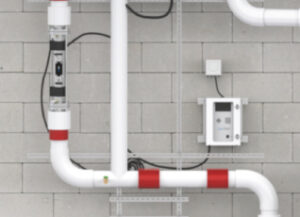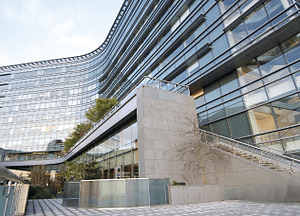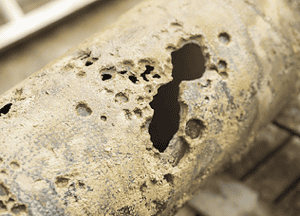Legionella is a bacteria found in potable and nonpotable water systems that is the cause of Legionnaires’ disease and proliferates rapidly in warm water environments. Although the number of cases reported yearly in the United States is comparatively low, this is a serious and potentially fatal illness. It is especially dangerous because of how it spreads.
Legionella in water is only harmful if inhaled as mist, steam, or vapor. However, a contaminated source can potentially infect a large group of people. Many outbreaks have been traced to hotels and other places where groups congregate. For example, outbreaks of Legionnaires’ Disease from air conditioning units infested with the bacteria have been reported. When it comes to preventing Legionnaires’ Disease, water treatment is crucial.
Understanding Legionnaires’ Disease
The first recorded instance of an outbreak of Legionnaires’ Disease was in 1976. More than 180 people attending an American Legion convention in Philadelphia fell ill with a previously unknown form of pneumonia. Of those who became sick, 29 died. Not long after this, the Legionella bacteria were identified.
The most common symptoms of Legionnaires’ Disease are respiratory, coughing, and chest pain. In addition, patients may experience a fever, chills, confusion, loss of appetite, and nausea. These typically appear within two to ten days of exposure to the pathogen. Older people have the highest risk of contracting the disease, along with those who are immunocompromised or suffer from chronic lung disease. Treatment usually involves a regimen of antibiotics.
How to prevent an outbreak
Understanding what causes Legionella in water is critical to protecting your property from an outbreak. Like any microorganism, the Legionella bacterium requires the right conditions to flourish. It survives by feeding on a biofilm that can build up on the inside of pipes and other plumbing components. The longer water sits in pipes without moving, the greater the chances that the bacteria will be able to thrive on this biofilm.
It’s also important to note that warmer temperatures give the bacterium ideal conditions to spread. Typically, water between 77 and 114 degrees is the most hospitable environment. On top of that, plumbing that does not receive proper disinfection or suffers from lower corrosion resistance could also encourage the development of Legionella. Our LiquiTech® Copper-Silver Ionization System attacks Legionella’s ability to absorb nutrients, so it doesn’t have a chance to increase.
At the same time, it is critical to maintain and clean your equipment to prevent an outbreak of Legionnaires’ Disease from a cooling tower, say, or any other water source. In terms of the fight against Legionella, water treatment is a crucial weapon.
Unlike alternative treatments for Legionnaires in a water supply that suppress its spread, our technology effectively kills the bacteria. The process involves inserting positively charged copper and silver ions directly into the contaminated pipes. The ions form electrostatic bonds with negatively charged sites on the microorganisms’ cell walls. These connections stress the cells to the point where they can no longer absorb the biofilm. Without the food source, the pathogen quickly perishes.
Since this system requires no chemicals and creates no harmful byproducts, it is considered the safest and eco-friendliest solution to prevent an outbreak of Legionella. The process is not dependent on water temperature, so it can be used throughout your building without losing potency. Best of all, there are no corrosive effects, so it won’t damage your plumbing.
We provide the best way to prevent an outbreak of Legionnaires’ Disease from a water heater or any other source within your property. If you need to control an emergency Legionella outbreak, we also offer fast, responsive services.


